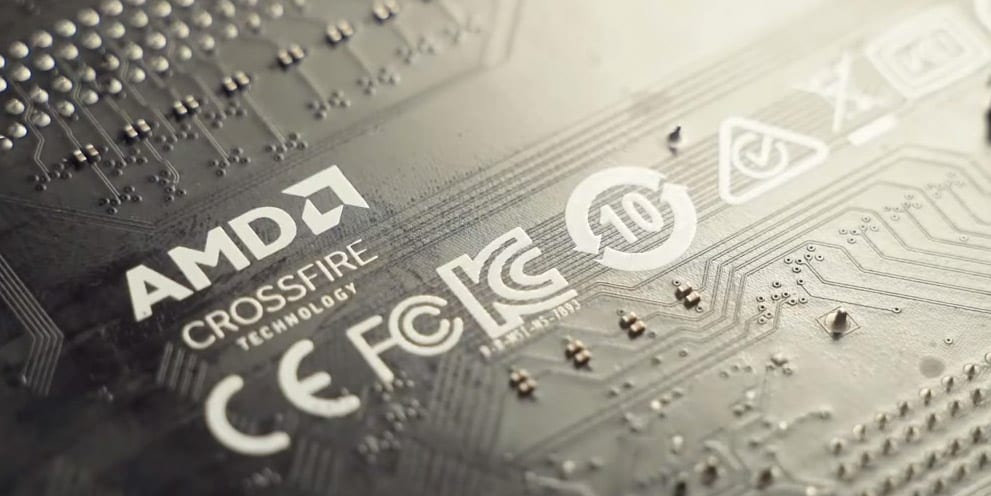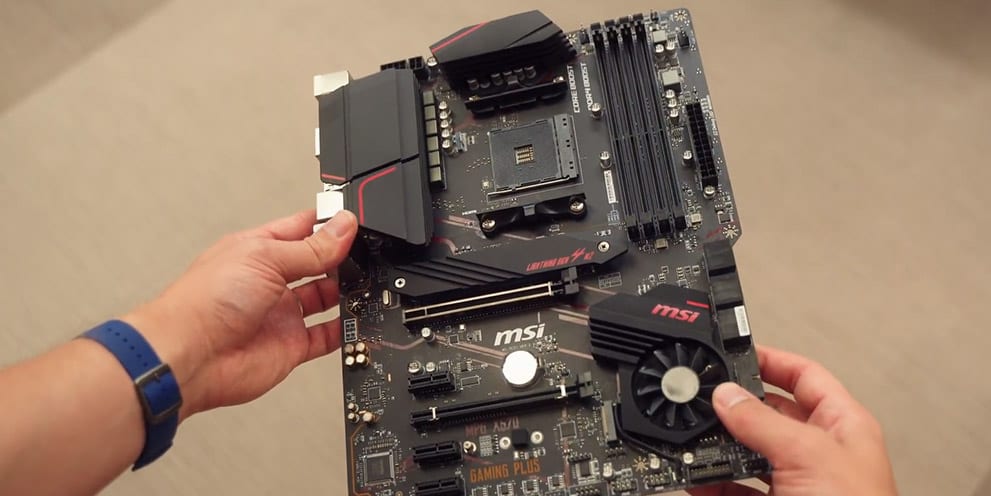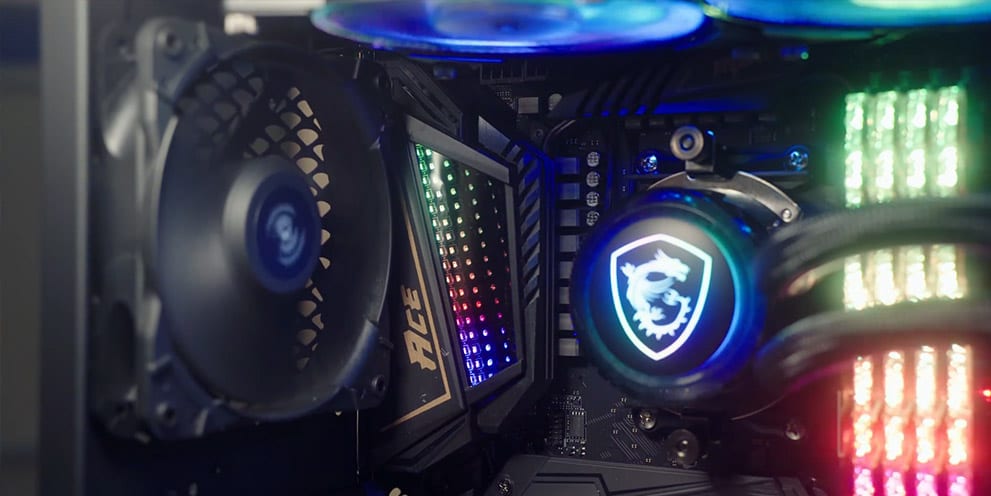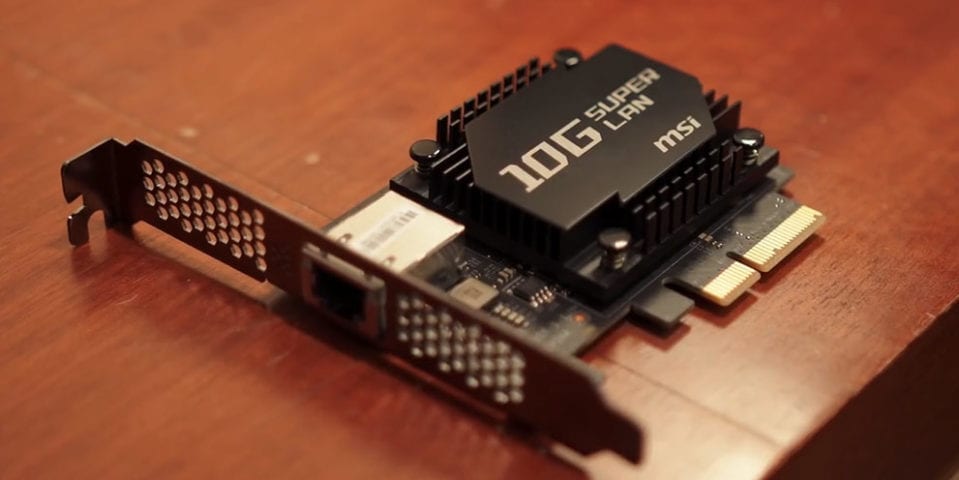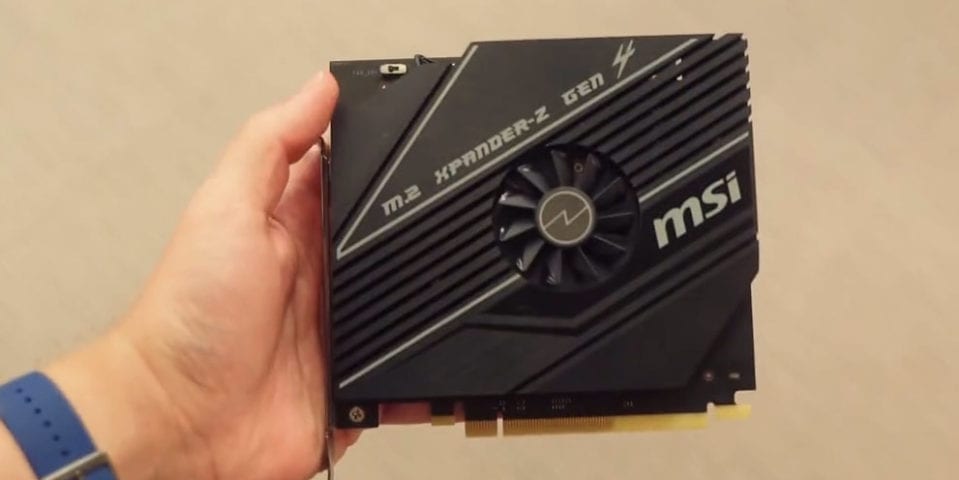AMD Ryzen X570 Motherboards Look AMAZING!

Share:
The third generation Ryzen announcement was made today, and we want to highlight some cool features about the whole X570 platform. So while everybody’s at ASUS checking out their latest products, we decided to head over to MSI HQ and check out what is cooking with the X570 motherboard rollout. We’re going to talk about their entire lineup of upcoming AM4 motherboards from the budget-oriented all the way to the premium models. This is MSI X570’s lineup explained.
Staying Cool with Heatsink Fans
The first thing you’ll notice on every single motherboard are these heatsink fans, which every motherboard vendor we’ve spoken with will be using on their X570 models. There is a lot of concern about the noise produced by these small and noisy fans, but they are necessary because the new X570 chipset has a TDP of 11W, whereas the older X470 only put out 6W of heat. Most of that additional heat is due to all the new ultra-high-speed PCIe lanes provided within the new X570 chipset. Now MSI hopes to remove almost all noise by using technology from their Twin Frozr GPUs to stop the fans completely during idle situations, and they are also using propeller blades for better air flow and slightly quieter operation.
Upgrade to PCIe Gen4
Now the coolest feature of the entire X570 platform is support for next generation PCIe Gen4. No GPUs have it or need it at the moment, but it’s pretty cool to have this future-proof technology built-in at the start. Even lower priced motherboards like the MSI X570 Gaming Plus will have a TON of bandwidth available for GPUs in the future.
Sixteen PCIe lanes are dedicated from the chipset to the graphics card slots, in either x16 or x8 / x8 configuration. Boards like the Gaming Plus, Gaming Edge, and the Gaming Pro Carbon AC don’t actually support SLI officially but the higher-ends do, and that’s okay since SLI on the lower-end tiers is probably not going to be something most people will pursue anyway and some NVIDIA GPUs don’t even support it. The higher-end motherboards like the MEG X570 ACE and the X570 GODLIKE have full SLI support though, and they use a PCIe multiplier to offer full x16 / x16 speeds. Of course, there’s complete CrossFire support across the entire range of motherboards from low-end to high-end.
While the PCIe Gen4 capabilities won’t be as important for GPUs as it is for storage right now, eventually GPUs will catch up. Currently storage devices that can take advantage of these faster speeds are still pretty limited, but we’ve seen some SSDs with 5GB/s transfer rates. The downsides of course is that they will run super hot and they will be expensive too. Due to enhanced signaling rates required by the increased bandwidth, MSI needed to drastically upgrade their motherboard PCBs to include reinforced traces between the CPU, the chipset and the PCIe slots meaning every motherboard in their lineup uses server grade components to reduce any bandwidth loss.
Improved Overclocking
What else do you need to know about X570 features and its effect with the third-gen Ryzen? Well MSI tells us that overclocking capability has improved drastically, especially on the memory side. Given the sort of disappointing history with overclocking on the first and second-gen Ryzen platforms, this is really good news to hear. This is especially useful for higher capacity kits and higher clocked kits as well. MSI has told us they’ve done some tests and they have hit DDR4-4400 on air on their lower-end motherboards without any issues, that sounds really promising.
They have improved the internal memory timings on their higher-end motherboards too, and that all combines into better stability and compatibility with third-gen Ryzen, which I’m just really happy to hear about. They also use upgraded the memory VRMs to be able to withstand DDR4-4600 on air as well and DDR4-5000 when overclocking with liquid nitrogen. As for CPU overclocking with third-gen Ryzen, we are told is going to be better but not significantly using traditional cooling methods, which I’m guessing that is what we can all expect.
Now due to the power needed by 12-cores/24-thread processors, MSI really has gone to town with their VRM designs and are using high-quality International Rectifier (IR) MOSFETs on all their X570 motherboards. Not only are IR MOSFETs some of the best in the industry, but they also have ultra quick response times. On some of the boards, there are huge heatpipes that link together various heatsinks, and that is supposed to drastically increase cooling capacity. Also every one of these MSI motherboards have either 8 + 4-pin power connectors or 8 + 8-pin power connectors for the CPU. Even though third-gen Ryzen is using the new 7nm process, which is efficient, AMD have elected to maximize the power envelope to fit more cores and higher clock speeds. For instance, the Ryzen 9 3900X is a 12-core/24-thread CPU with base clock of 3.8GHz, but it can boost up to 4.6GHz and has a reasonable 105W TDP.
Chipset I/O
Moving on to the I/O, there’s a lot going on within the chipset: 16 PCIe Gen4 lanes that are broken up between secondary PCIe devices, the NVMe slots, and other accessories. There is native support for USB 3.2 Gen2, but that just a rebranding of USB 3.1 Gen2. There is no Thunderbolt support on the X570 because it drives up the cost, and due to the difficulty surrounding the certification process with Intel because they require access to the microcode on the CPU.
MSI MPG X570 Gaming Plus
Let’s quickly go over the motherboard lineup from MSI, starting with the MPG X570 Gaming Plus. Just remember there’s no pricing yet, but this is the least expensive of the boards. The MPG features a cool red and black design that’s not over the top, it has two PCIe x16 slots that can run in x16 or x8/x8 configuration, one PCIe x4 Gen4 M.2 slot, and USB 3.2 Gen2 connectivity for both the rear I/O panel and the front panel connector.
MSI MPG X570 Gaming Edge Wi-Fi
Next up is the Gaming Edge Wi-Fi, which is still a more affordable motherboard similar to the Gaming Plus, but adds Wi-Fi support, a pre-installed I/O shield and comes with four USB 3.2 Gen2 ports, three Type-A and one Type-C.
MSI MPG X570 Gaming Pro Carbon Wi-Fi
Now we’re going to start with a slightly higher-end boards like the Gaming Pro Carbon Wi-Fi. This one incorporates more RGB elements with the Mystic Light integration, adds an upgraded VRM, larger heatsinks, and cutting-edge Wi-Fi 6 connectivity.
MSI MEG X570 ACE
Now the flagship boards start with the MEG X570 ACE. This model extends the heatpipe for better cooling, and it also has this really cool infinity Mystic Light on the VRM heatsink beside the CPU. It has Wi-Fi 6, a pre-installed I/O shield, and three Gen 4 M.2 slots. Note that technically X570 can support RAID with NVMe M.2 SSDs that are connected to the CPU lanes, but driver support will be only officially available after launch. This board also supports double full-speed PCIe x16 slots since it has an internal lane multiplier.
MSI MEG X570 GODLIKE
Let’s finish off with the MEG X570 GODLIKE, and this motherboard is kind of nuts since it includes every feature anyone could want, and really represents the flagship model of MSI’s new X570 lineup.
It is an E-ATX motherboard – so slightly wider than average – and it includes all the same features as the ACE, but there is an OLED panel that shows off the status of the motherboard, Wi-Fi 6 connectivity bolstered by Killer Networking xTend technology, and a dial-to-control overclocking preset knob that goes up to 11 because that is one higher than 10, nice little reference if you get it.
It also includes this 10 Gigabit PCIe expansion card if you want extreme wired LAN speeds, and a secondary card that utilizes a PCIe Gen4 x8 interface and includes a massive heatsink with a fan underneath. Why does it required so much bandwidth and cooling? Well that’s because underneath there are two NVMe M.2 slots that each operate at PCIe x4 Gen4. Once AMD gets RAID working on M.2 slots, this thing is going to be absolutely insane for storage speeds. It’s kind of cool to see, but you know it’s all about the show off factor.
MSI X570 Initial Impressions
That concludes our overview of MSI’s upcoming X570 motherboard lineup. There aren’t too many motherboards so you won’t get super confused about what models are lower-tier, mid-range, or higher-end. I’m excited to see how good overclocking is on the lower-end models versus the higher-end stuff. This is something that will definitely push me towards the new third-gen Ryzen and X570 platform, since it sounds very competitive, cutting edge, and exciting. If you’ve been contemplating getting an AMD system, perhaps this will push you away from the Blue Side, and I’m probably going to be one of those people as well.



